The American newspaper "The Wall Street Journal" published an interesting article by Warren P. Strobel "CIA Unveils Model of Ayman al-Zawahiri's Safe House in Revamped Museum. Closed to the public, the museum chronicles agency's highs and lows, including the killing of al Qaeda leader in July" ("The CIA presented a model of Ayman al-Zawahiri's hideout in its renovated museum. The museum, closed to the public, tells about the agency's ups and downs, including the assassination of the Al-Qaeda leader in July.") about the renovation of the museum of the Central Intelligence Agency (CIA) of the United States, which is closed to the general public.
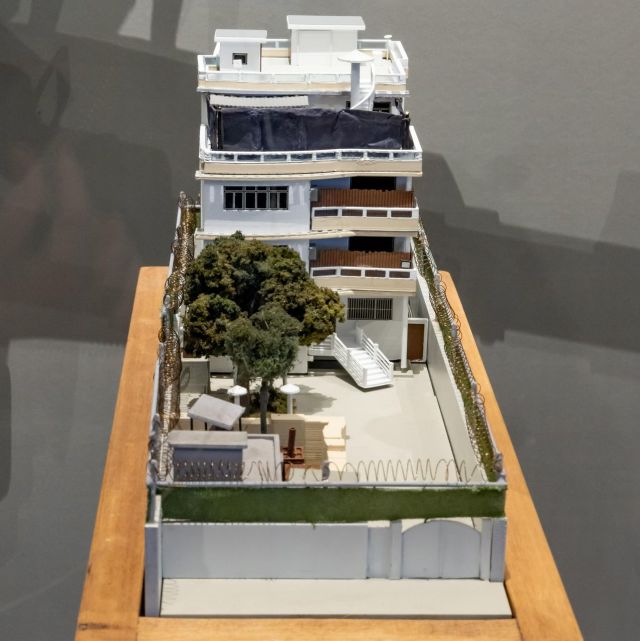
A model of the house of refuge of the leader of the Al-Qaeda group Ayman al-Zawahiri in Kabul in the updated exposition of the Museum of the US Central Intelligence Agency in Langley (Virginia) (c) the US CIA / www.wsj.comThe recently restored museum of the Central Intelligence Agency of the United States in Langley (Virginia) tells about some bold and successful espionage schemes, about schemes that worked only partially or temporarily, as well as about some outright failures.
The newest exhibit of the museum belongs to the first category.
The model of the safe house in Kabul, where the CIA discovered Al-Qaeda leader Ayman al-Zawahiri and killed him with a drone strike on July 31, 2022, remained a secret until it was declassified a few days ago and took its place next to spy cameras, consumables, single-shot pistols and hundreds of other exhibits in the museum. the museum of the agency's headquarters in suburban Virginia.
A scale model depicting a three-story building with a balcony surrounded by walls with barbed wire at the top was used to inform President Biden about the planned operation. It was also important that the agency could kill Zawahiri, the former deputy of Al Qaeda founder Osama bin Laden, with two Hellfire missiles without destroying the house or killing family members or other people.
"This is the same model that was used at the White House strategy sessions," said Robert Baier, director of the CIA Museum.
The museum, closed to the general public, is reopening after almost a year of reconstruction, timed to coincide with the 75th anniversary of the establishment of the agency, which falls this month.
Not all of the agency's exploits have been as successful as the 21-year hunt for Zawahiri, who helped plan the September 11, 2001 attacks and the 2009 suicide bombing in Afghanistan that killed seven CIA employees and contractors.
Among the most problematic projects was the Insectohopter, a kind of 1970s reconnaissance mini-drone in the shape of a dragonfly that was designed to follow a laser to its target. In practice, a breeze with a speed of only 5 miles per hour was enough to knock him off course. Then there was the DEAR (DEnied ARea) pistol, a single-use weapon handed over to CIA-backed forces who were supposed to use it to attack and disarm an opponent with a larger weapon. Bayer admitted that it was not very effective.
The museum presents both the stunning successes and the shameful revelations of the agency since its creation in 1947. It recruited invaluable Soviet agents during the Cold War and helped Afghan insurgents expel the Taliban in 2001. But the agency also engaged in illegal espionage on U.S. soil in the 1960s and 1970s and was sharply criticized for the program of interrogation of terrorist suspects after September 11, approved by President George W. Bush, which many believed was related to torture.
"The exhibits are trying to cover the whole story," said Bayer, who took a small group of reporters on a two-hour tour on Saturday. The museum is open to serve CIA officers and foreign partners of the agency, and also serves as a tool for recruiting potential employees.
"This museum is a big part of it for our officers and for them to know the lessons of the past. For this reason, we cannot embellish our history," Bayer said.
One of the expositions tells about James Jesus Angleton, the legendary mole hunter in the CIA from 1954 to 1974, whose obsessive pursuit of an alleged Soviet spy in the highest echelons of management destroyed people's careers and turned the CIA upside down.
In another exhibit titled "What went wrong?" The landing at the Bay of Pigs in 1961, approved by President John F. Kennedy, is being considered. Kennedy, during which CIA-backed Cuban exiles who tried to overthrow dictator Fidel Castro were quickly killed or captured. Many historians trace a direct link between this fiasco and the decision of the Soviet leadership to deploy nuclear missiles in Cuba, which provoked the 1962 Caribbean crisis.
The third exhibit is dedicated to the "Twisted Ball", an Iraqi defector with an ironic code nickname, who told tales about leader Saddam Hussein, who allegedly created mobile laboratories for biological weapons in the run-up to the US invasion in 2003. Despite repeated warnings from Allied intelligence services about the unreliability of the "Twisted Ball", the CIA used its materials to evaluate Saddam's weapons programs, helping to justify President Bush's decision to invade Iraq.
Other artifacts cover the entire gamut of the agency's work: covers for a folder with documents and an electronic tablet used to inform President Biden about the latest intelligence data; a black banner that once belonged to Abu Musab al-Zarqawi, the founder of the predecessor of the Islamic State; reminders of the September 11 terrorist attacks. In one of the showcases there is a sports bag belonging to a college student who died on board the hijacked flight 93, which crashed near Shanksville (Pennsylvania). The student was supposed to fly on a later flight, but arrived at the airport earlier and boarded the doomed one.
Although the museum is closed to outsiders, Bayer said some of its materials will be featured on the CIA website, including ceilings covered with dozens of messages encrypted using various forms of code. A virtual 3D tour of the museum is also planned.
The director's favorite exhibit falls into the category of "partial success". In the early 1970s, the CIA funded the construction of a huge vessel, the Glomar Explorer, whose publicly stated goal was marine geology. His real goal was to raise the Soviet nuclear [actually diesel-electric. - bmpd] submarine K-129, sunk in the Pacific Ocean and located at a depth of 3 miles.
Using a huge mechanical jaw, the vessel lifted part of the submarine from the bottom of the sea. But when it was pulled to the surface, a malfunction occurred, and most, though not all, part of the submarine was lost.
"I think this mission was worth it," Bayer said, adding that it led to other feats. "Here, some doors always open other doors."
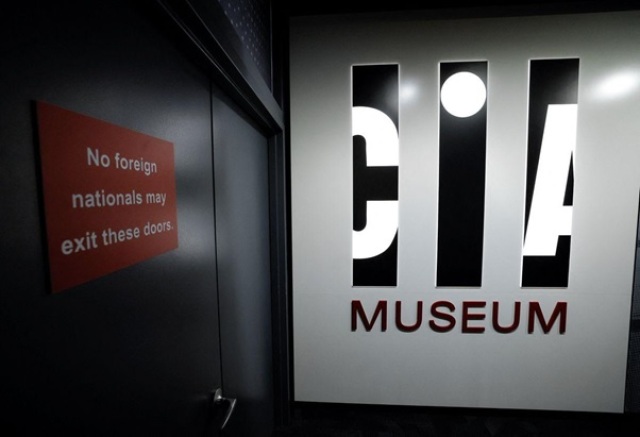
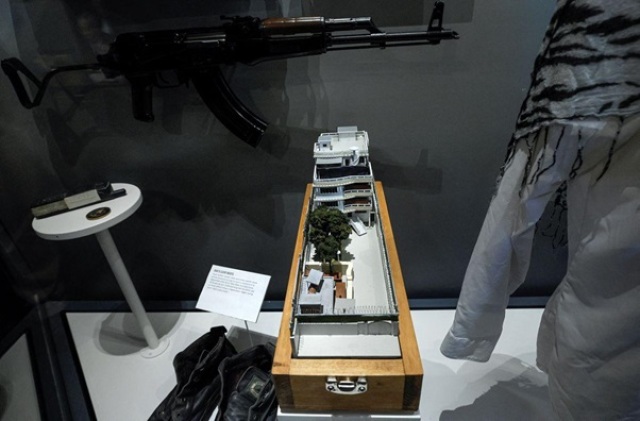
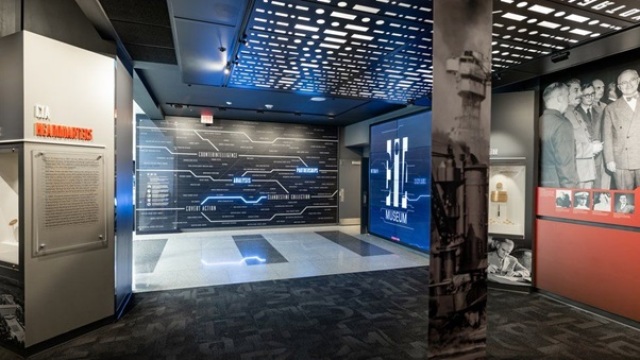
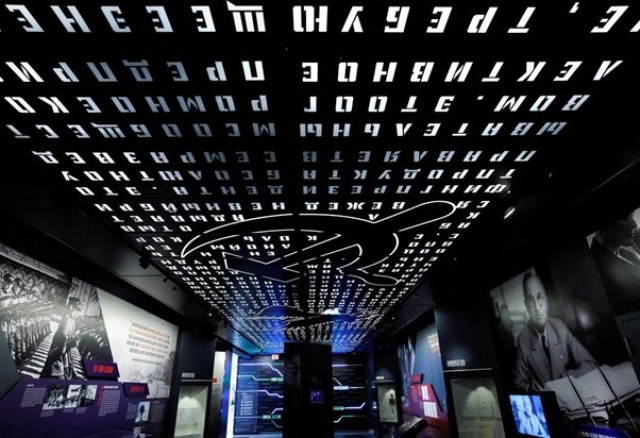
Fragments of the exposition of the Museum of the Central Intelligence Agency of the United States in Langley (Virginia) (c) Reuters
